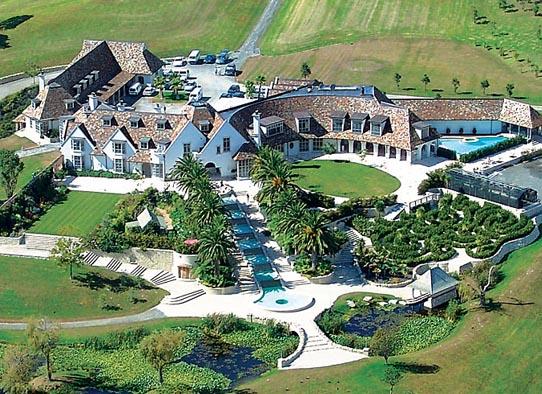Cleft lip and cleft palate comprise the most common birth defect in the United States. One of every 600 newborns is affected by cleft lip and/or cleft palate.
A cleft lip is a separation of the two sides of the lip. The separation often includes the bones of the upper jaw and/or upper gum. A cleft palate is an opening in the roof of the mouth in which the two sides of the palate did not fuse, or join together, as the unborn baby was developing. Cleft lip and cleft palate can occur on one side (unilateral cleft lip and/or palate), or on both sides (bilateral cleft lip and/or palate). Because the lip and the palate develop separately, it is possible for the child to have a cleft lip, a cleft palate, or both cleft lip and cleft palate.
Cleft lip and cleft palate are congenital defects, or birth defects, which occur very early in pregnancy. The majority of clefts appear to be due to a combination of genetics and environmental factors. The risks of recurrence of a cleft condition are dependent upon many factors, including the number of affected persons in the family, the closeness of affected relatives, the race and sex of all affected persons, and the severity of the clefts.
A child born with a cleft frequently requires several different types of services, e.g., surgery, dental/orthodontic care, and speech therapy, all of which need to be provided in a coordinated manner over a period of years. This coordinated care is provided by interdisciplinary cleft palate/craniofacial teams comprised of professionals from a variety of health care disciplines who work together on the child's total rehabilitation.
Some glossaries about cleft pallate:
A
Alveolar Ridge: The bony ridge of the gumline containing the teeth.
Anesthesia: Drugs provided during a surgical or dental operation that put the child to sleep.
Articulation: Movements of the mouth and airway that produce speech.
Articulation Test: An evaluation which provides information about how speech sounds are formed.
Audiogram: A record of hearing levels or sensitivity.
Audiologist: A person with a degree, license, and certification in audiology (science of hearing) who measures hearing, identifies hearing loss, and participates in rehabilitation of hearing impairment.
Back to Top
C
Columella: The central, lower portion of the nose which divides the nostrils into right and left.
Communication Disorder: An interference with a person's ability to comprehend others or express themselves (usually in verbal form).
Comprehension: Knowledge or understanding of spoken or written language.
Congenital: A disease, deformity, or deficiency existing at the time of birth.
Consonant: Every letter sound except a,e,i,o,u.
Craniofacial Anomaly: A visible, structural and/or functional difference affecting the head (cranium) and/or face.
Crossbite: A dental condition where the upper teeth are behind the lower teeth rather than in front of them.
Crouzon Syndrome (Craniofacial Dysostosis): See Fact Sheet.
Back to Top
D
Denasality: The quality of voice that lacks normal nasal resonance for /m /n/ ng ("head cold" sound).
Dental Arch: The curved structure formed by the teeth in their normal position.
Dental Extraction: Dental procedures performed to remove damaged, malformed, or malpositioned teeth.
Dental Restoration: Dental procedures performed to repair or correct damaged, malformed, or missing teeth.
Back to Top
E
Eardrum: Tympanic membrane which vibrates and transmits sound to the middle ear.
E.N.T.: The abbreviation for ear, nose, and throat.
Eustachian Tube: The air duct which connects the nasopharynx (back of the throat) with the middle ear; usually closed at one end, opens with yawning and swallowing; allows ventilation of the middle ear cavity and equalization of pressure on two sides of the eardrum.
Evaluation: Assessment, test.
Expressive Language: Communication of one's ideas, desires, or intentions to others, usually through speech or printed words.
Back to Top
F
Fistula: An abnormal opening, usually referring to a hole in the palate after repair.
G
Genetics: The science of heredity (how things pass from one generation to the next).
H
Hard Palate: The front part of the roof of the mouth containing bone covered by mucosa (pink "skin").
Hearing Impairment: A loss in hearing which may range from mild loss to complete deafness.
Heredity: The total of the physical characteristics, abilities, and potentialities genetically derived from one's ancestors.
Hypernasality: Speech that sounds overly "nasal," as if the person is "talking through his/her nose."
Hyponasality: Denasality. A lack of normal nasal resonance during speech.
Back to Top
L
Language Disorder or Impairment: Inability to communicate normally and effectively due to problems with comprehension or expression of language.
M
Malocclusion: A deviation from normal occlusion, that is, incorrect positioning of the upper teeth in relation to the lower teeth.
Mandible: The lower jaw.
Maxilla: The upper jaw.
Middle Ear: The portion of the ear behind the eardrum. It contains three small bones which transfer sound from the eardrum to the inner ear.
Myringotomy: A minor surgical procedure in which a small slit is made in the ear-drum to allow fluid to drain from the middle ear.
Multidisciplinary Team: A group of professionals who work together to help plan and carry out treatment for patients with cleft lip, cleft palate, and related disorders. The group usually includes surgeons, dental specialists, speech pathologist, and others who meet regularly to evaluate and discuss the patients under their care.
Back to Top
N
Nasal Emission or Nasal Escape: An abnormal flow of air through the nose during speech. Usually indicative of an incomplete seal between oral and nasal cavities.
Nasal Septum: The "wall" that divides the nose into right and left halves. It normally joins the roof of the hard palate like an "inverted 7."
Nasopharyngoscope: A lighted telescopic instrument used for examining the passages in the back of the throat. Useful in assessing velopharyngeal function.
Back to Top
O
Occlusion: Relationship between upper and lower teeth when they are in contact. Refers to the alignment of teeth as well as relationship of dental arches.
Oral Cavity: The mouth bounded by the teeth in front and the soft palate at the back.
Oral Hygiene: Care of the teeth and gums which is performed at home on a daily basis. This is performed first by the child's parent or guardian while the child is small and eventually by the child under continued supervision of the parent or guardian.
Oral-Maxillo Facial Surgery: The specialty of dentistry concerned with management of dental and skeletal deformities.
Orofacial: Relating to the mouth and face.
Orthodontics: The specialty of dentistry concerned with the correction and prevention of irregularities and malocclusion of the teeth and jaws.
Orthodontic Care: Dental visits designed to move the teeth into better alignment with one another to improve chewing, oral hygiene, and appearance.
Otitis Media: Inflammation of the middle ear with accumulation of thick, mucous-like fluid - Ear infection.
Otolaryngologist: An "ear, nose and throat" physician specializing in the diagnosis and management of head and neck disorders.
Back to Top
P
Palatal Insufficiency: A lack or shortness of tissue preventing the soft palate from contacting the back of the throat (pharynx).
Palate: The roof of the mouth including the front portion, or hard palate, and the back portion, or the soft palate (also called the velum).
Pediatrician: A physician specializing in treatment of children.
Pediatric Dentistry: The specialty of dentistry concerned with the care of children's teeth.
Pharyngeal Flap: Surgical procedure designed to minimize hypernasality. A flap of skin creates a "bridge" between the soft palate and the back of the throat
Philtral Columns: Normal ridges in the skin of the central upper lip connecting the peaks of the Cupid's bow to the back of the nose.
Pierre Robin Sequence: See Fact Sheet.
Premaxilla: The small bone in the upper jaw which contains the upper four front teeth. Normally connected with the side segments of the upper jaw (maxilla) but separated in some clefts.
Preventative Dental Care: Regular dental visits during which teeth are checked for cavities and cleaned.
Prolabium: The central area of the upper lip beneath the center of the nose (columella) and between the philtral columns.
Prosthesis: An artificial substitute for a missing body part.
Prosthetic Speech Aid: A removable plastic appliance which provides a structural means of achieving velopharyngeal closure (separating the nose from the mouth).
Prosthodontist: A dentist who specializes in providing prosthetic appliances for oral structures.
Psychologist: An individual with the necessary academic training and experience to be licensed to practice psychology as a profession.
Back to Top
R
Radiography: Photographic film or plate depicting images of internal body parts. X-ray.
Resonance: Vocal quality associated with the vibration of air in the oral and nasal cavities.
S
Soft Palate: The back part of the roof of the mouth containing muscles and mucosa (pink "skin"). The Latin name for the soft palate is "velum".
Speech-Language Pathologist: An individual with the necessary academic training and experience to be certified or licensed to diagnose and treat disorders of speech, language, and communication.
Speech Defect: Deviation of speech from the range of normal.
Speech Videofluoroscopy: A tape recorded x-ray examination of the speech mechanism during function, focusing on the soft palate (velum) and walls of the throat (pharynx). Useful in assessing velopharyngeal function.
Sphincter Pharyngoplasty: Surgical procedure designed to minimize hypernasality.
Submucous Clefts: See Fact Sheet.
Surgery: One of several medical specialties focused on the restoration and repair of various external defects.
Back to Top
T
Treacher Collins Syndrome (Mandibulofacial Dysostosis): See Fact Sheet.
U
Uvula: Small, cone-shaped muscular process hanging at the back of the soft palate.
V
Velopharyngeal Closure: The closing of the nasal cavity from the oral cavity which directs air used in speech through the mouth rather than the nose. It requires interaction of the muscles in the palate and the back of the throat.
Velopharyngeal Incompetence: Inability to achieve adequate velopharyngeal closure despite structures that may appear normal.
Velopharyngeal Insufficiency: A structural or functional disorder resulting in the inability to achieve adequate separation of the nasal and oral cavities.
Velum: The Latin name for the soft palate.
Voice Disorder: Speech problems such as hoarseness, low speaking volume, or strained voice quality.












![chriscomansion[1].jpg](http://img692.imageshack.us/img692/1584/chriscomansion1.jpg)

































![1[1].JPG](http://img810.imageshack.us/img810/574/96453640.jpg)